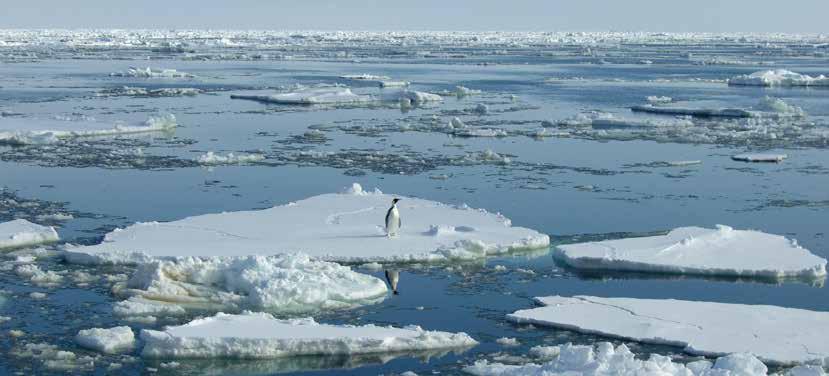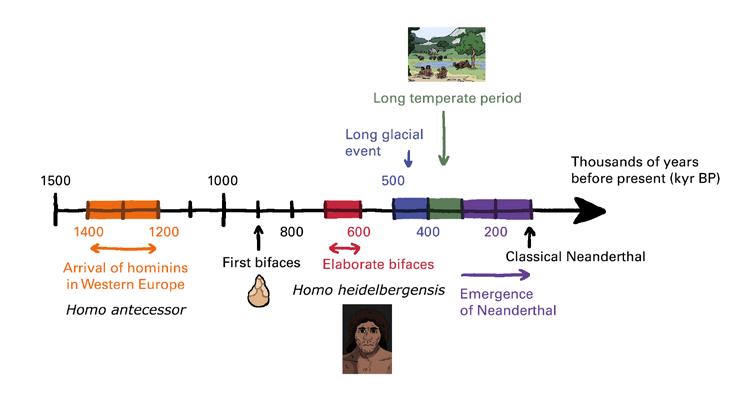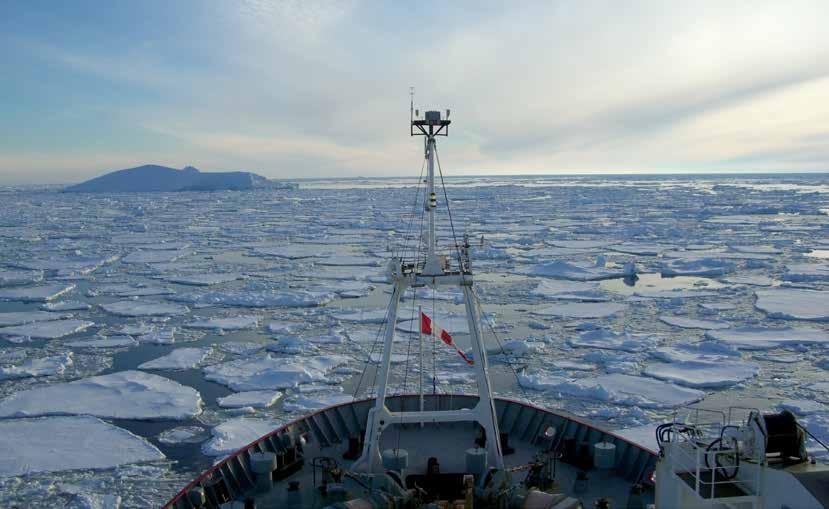
6 minute read
What can algae tell us about Antarctic sea ice 130,000 years ago? And what does it mean for the future?
Matthew Chadwick and Claire S. Allen
The Last Interglacial* is a time period that occurred between 130,000 and 116,000 years ago, and was a time when Antarctic temperatures were similar to what is predicted for 2100. The Last Interglacial, therefore, represents an excellent case study to investigate the response of the sensitive components of the Earth system, for instance, the polar ice sheets* (ice on the land which has formed from snowfall) and the seaice* cover (ice on the sea which has formed from freezing seawater), to a warmer-than-today polar climate.
Advertisement
Present-day Antarctic winter sea ice covers an area of 18,000,000 km2, nearly twice the size of the USA, and is highly reflective compared to the surface of the ocean. White surfaces (like sea ice) reflect solar energy whereas dark surfaces (like the ocean) absorb solar energy. Therefore, the less sea ice there is, the more solar energy the Earth absorbs and the warmer it gets. Sea ice provides a platform that multiple species of penguins and seals rely upon for resting and breeding. Sea ice is also a surface for microscopic algae to grow on, and, during the yearly melt of winter sea ice, nutrients and meltwater are released, helping to promote large algal blooms in the Southern (or Antarctic) Ocean.
Therefore, understanding how Antarctic sea ice responded to warming air and ocean temperatures during the Last Interglacial is important for predicting how it will respond to current global warming, and thereby estimating how much Antarctic sea ice will be lost by 2100, and the domino effect of that loss in reflectivity.

To find out how Antarctic sea ice changed during the Last Interglacial, and what caused those changes, we look at the sediments deposited on the ocean floor. Silica (glass) “skeletons” of diatoms, a type of photosynthesizing micro-algae (5-300 µm in size, or about the thickness of a sheet of paper) are preserved in these sediments. There are only a few ways of reconstructing past sea ice, and diatoms preserved in marine sediments are the most robust and commonly used. Numerous species of diatoms live in the Southern Ocean today, each with their own specific environmental preferences; therefore, the changing abundances of these different species in ocean floor sediments can be used to reconstruct past environmental changes. Here, the focus is on just two diatom groups, and what they can tell us about changes in Antarctic sea ice during the Last Interglacial.
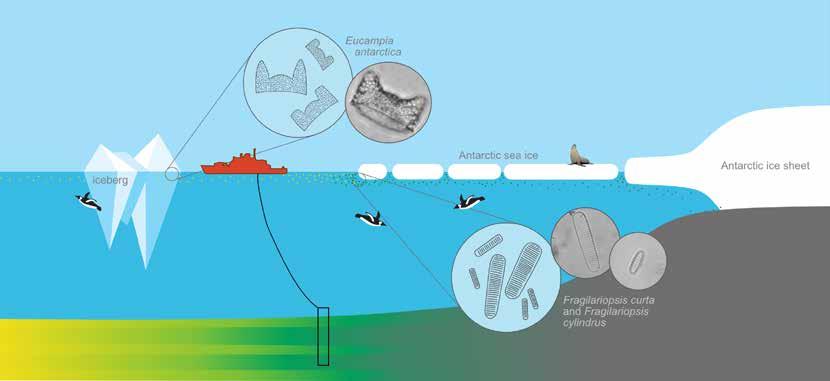
Figure 1: Schematic cross section (a vertical slice looked at from the side) of the Southern Ocean near Antarctica showing the environmental preference for the diatom species Fragilariopsis curta and Fragilariopsis cylindrus, as well as a research ship collecting a sediment core from beneath the present-day sea-ice edge. The first of these diatom groups is the combined abundance of Fragilariopsis curta and Fragilariopsis cylindrus (FCC), which is associated with Antarctic winter sea ice (Fig. 1). A higher percentage of diatom skeletons from the FCC group in ocean floor sediments indicates the presence of winter sea ice above that location, and a decreased abundance indicates the retreat of the winter sea-ice edge further south than that location. The second diatom group is the Eucampia antarctica, which is associated with the iceberg flux over a location (Fig. 1). High abundances of Eucampia in ocean floor sediments indicate a large number of icebergs over that location.
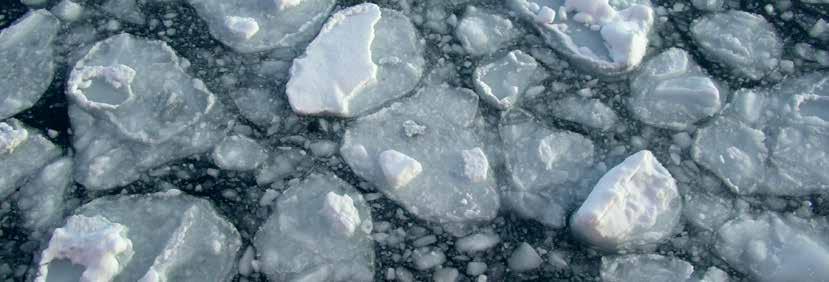
Figure 2: Schematic abundances of two diatom groups (FCC and Eucampia) across glacial and interglacial time periods alongside their Last Interglacial abundances in sediment deposited between 132 and 120 thousand years ago. The sediment core location is shown relative to Antarctica and the present-day winter sea-ice extent.
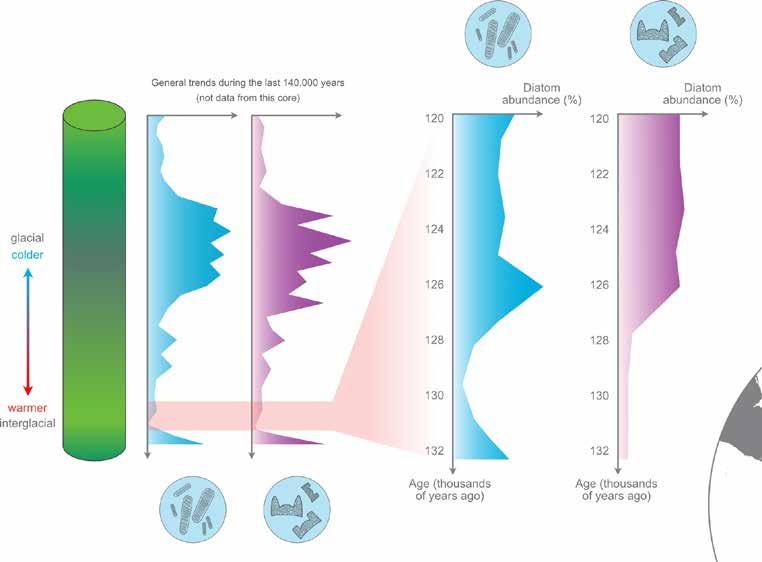
In order to investigate how the abundances of these two groups of diatoms changed during the Last Interglacial, we take a cylinder of ocean floor sediments, known as a sediment core. This core was collected by a research ship (Fig. 1) and is made up of a combination of particles originating from continents, such as dust blown from deserts or pieces of rock eroded and transported by icebergs, and biological particles, which have settled down from the surface ocean. The material in this core accumulated over hundreds of thousands of years, and we can select the sediments that were deposited during our time interval of choice, in this case between 132,000 and 120,000 years ago (Fig. 2), to investigate changes in diatom abundances both just before and during the start of the Last Interglacial.
Results from the studied marine sediment core suggest a decrease in the FCC abundance (blue in the zoom-in graph covering the interval
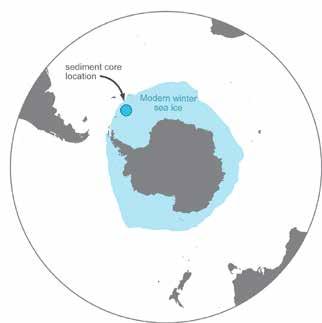
132,000–120,000 years ago in Fig. 2) to a minimum at 130,000 years ago before an increase to a relative maximum at around 126,000 years ago. The FCC abundance is then largely the same for the entire time between 125,000 and 120,000 years ago. In parallel, the Eucampia abundance (purple in the zoom-in graph covering the interval 132,000–120,000 years ago in Fig. 2) is low between 132,000 and 128,000 years ago before increasing at the same time as the increase in FCC abundance. The Eucampia abundance is then largely the same for the whole 126,000 to 120,000 thousand years ago time period. While these changes in FCC and Eucampia abundances are significant for understanding the dynamics of sea ice and icebergs during the Last Interglacial, they are relatively small changes on the scale of a full glacial-interglacial* cycle, as shown by the schematic abundances represented on the left in Figure 2.
Still, the changes in FCC abundances indicate a retreat of the winter sea-ice edge past the location of this core during the Last Interglacial to a minimum sea-ice extent around 130,000 years ago before a slight re-expansion of Antarctic winter sea-ice extent at 126,000 years ago. The Eucampia abundances indicate that this small expansion of winter sea-ice extent occurs at the same time as a large increase in the amount of icebergs passing over this core location. Taken together, these two diatom groups help elucidate some of the responses of Antarctic sea ice to warming ocean and air temperatures. As the Earth warmed during the Last Interglacial, much of the sea ice surrounding Antarctica melted, causing the sea-ice edge to move closer to the continent, shown by the decrease in FCC abundance at 130,000 years ago. This retreat allowed the less reflective ocean to absorb more solar energy and warm even further. The warm ocean helped drive a large release of icebergs from the Antarctic ice sheets, as shown by the increase in Eucampia abundance at 126,000 years ago, causing a substantial reduction in the size of the Antarctic ice sheets. As the icebergs travelled across the ocean, they would have melted and released cold and fresh water into the surface of the ocean, causing a large rise in global sea levels. The cold, fresh surface waters can also freeze more easily; therefore, the large number of icebergs helps cause the slight re-expansion of sea ice, as shown by the FCC abundance increase 126,000 years ago.
From these two diatom groups we can see how both Antarctic sea-ice cover and the Antarctic ice sheets were sensitive to warmer polar temperatures during the Last Interglacial, with substantial reductions in the extent of both compared to the present day. The slight re-expansion of Last Interglacial sea ice indicated by the FCC abundances (Fig. 2) was still reduced relative to the present-day sea-ice extent, and it is clear that if Antarctic temperatures reach or exceed the 2100 predictions (1.5 to 3oC, or 2.7 to 5.4oF, warmer than the present-day) this warming will be accompanied by a loss in both Antarctic sea ice and ice sheets.
